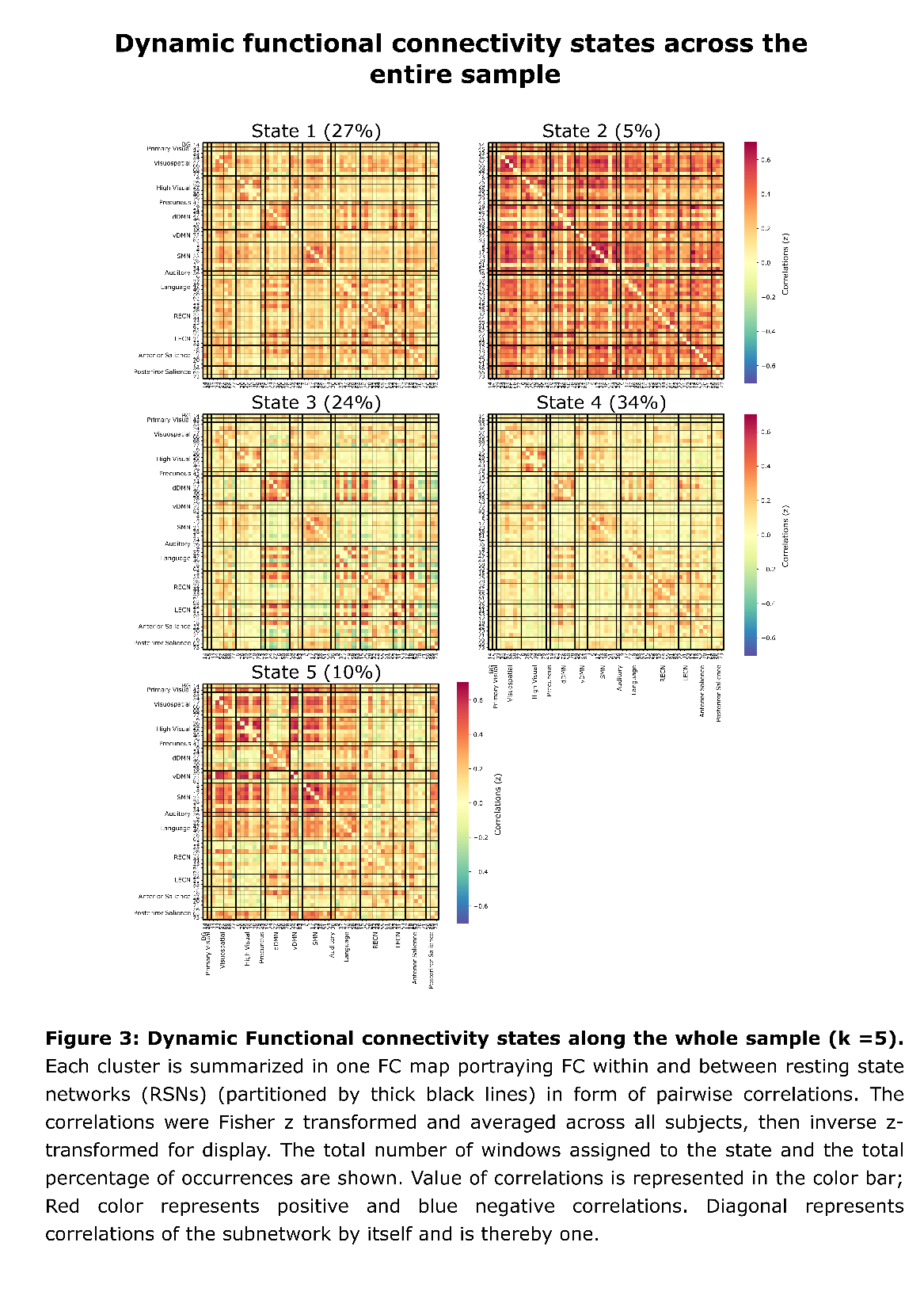Category: Parkinson's Disease: Neuroimaging
Objective: Using a multimodal neuroimaging approach, we assessed whether striatal dopamine synthesis capacity modulates the temporal dynamics of FC in PD.
Background: The novel approach of dynamic functional connectivity (dFC) considers the dynamic nature of the brain by including the temporal fluctuations into functional connectivity analyses. In Parkinson’s disease (PD), dFC alterations have already been linked to disease progression and cognition. However, how loss of dopamine in the striatum is directly linked to changes in the dynamics of largescale brain networks is yet unknown
Method: Resting-state functional magnetic resonance imaging (rs-fMRI) of 55 PD patients and 17 age- and sex-matched healthy controls (HC) was used for analysis. For 43 patients and 13 HC, 18F-Dopa positron emission tomography (PET) scans were available. Striatal synthesis capacity of 18F-DOPA PETs was extracted using the Patlak method. Regarding rs-fMRI data, dimensionality was reduced using independent component analysis in GIFT and obtained components were grouped into 14 resting-state networks. To derive dFC states, a sliding window approach (44s window) and k-means clustering was performed. Measures of dFC, such as average dwell time per state and number of transitions, were compared between groups and further correlated with F-DOPA and clinical measures.
Results: dFC analysis resulted in 5 distinct states, varying in connectivity patterns and strength (See Fig1) . The PD group showed a higher visiting frequency in the segregated state 4 (X2=5.58, p=.018), while HCs spent significantly more time in the more interconnected state 1 (U=309, p=.033). Furthermore, spending more time the segregated state was associated with lower cognitive performance (τb(N=71)= -.186; p = .041) and lower dopamine synthesis capacity in the caudate (τb(N=56)=-.191, p= .028). Notably, this effect did not survive multiple comparison correction.
Conclusion: Our findings suggest dFC alterations are accompanied by executive dysfunction and are linked to dopamine loss in the caudate. This indicates that striatal dopamine critically contributes to the dynamic interplay between large-scale networks involved in cognitive processes.
To cite this abstract in AMA style:
A. Asendorf, H. Theis, M. Tittgemeyer, L. Timmermann, G. Fink, A. Drzezga, M. Hoenig, T. van Eimeren. Dynamic functional connectivity changes and striatal dopamine deficiency in Parkinson’s disease [abstract]. Mov Disord. 2022; 37 (suppl 2). https://www.mdsabstracts.org/abstract/dynamic-functional-connectivity-changes-and-striatal-dopamine-deficiency-in-parkinsons-disease/. Accessed December 18, 2025.« Back to 2022 International Congress
MDS Abstracts - https://www.mdsabstracts.org/abstract/dynamic-functional-connectivity-changes-and-striatal-dopamine-deficiency-in-parkinsons-disease/

